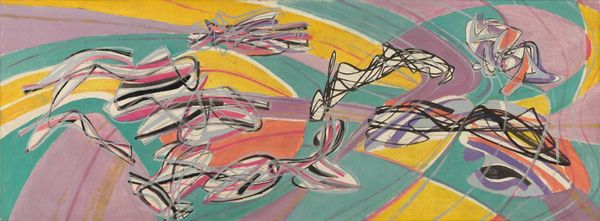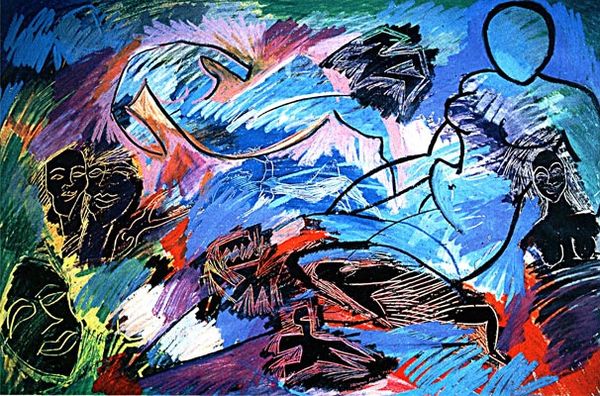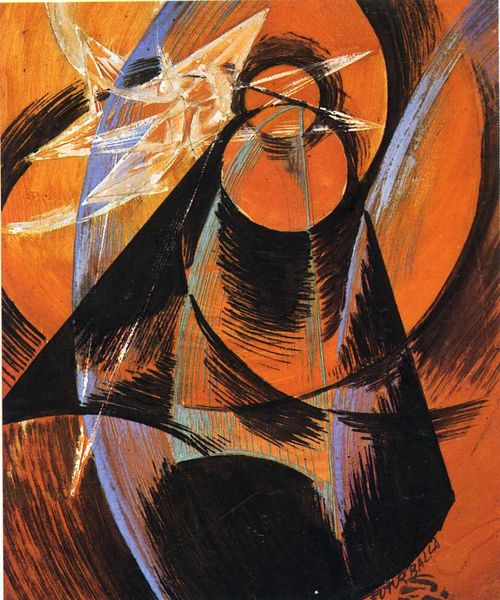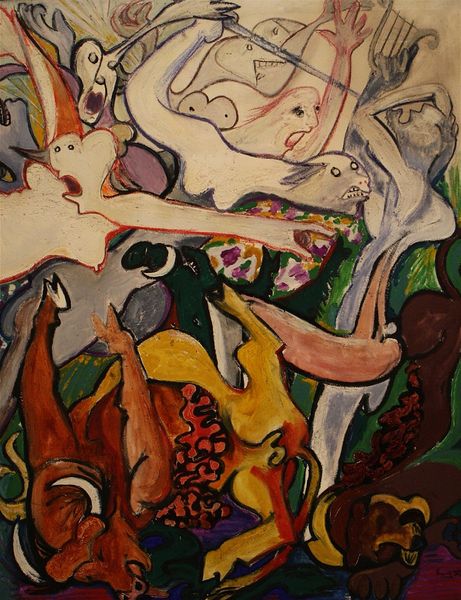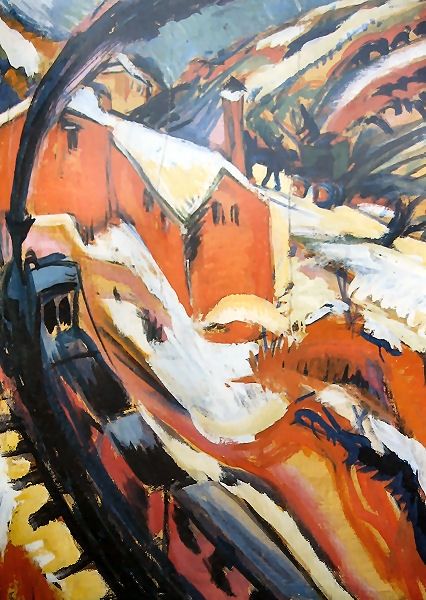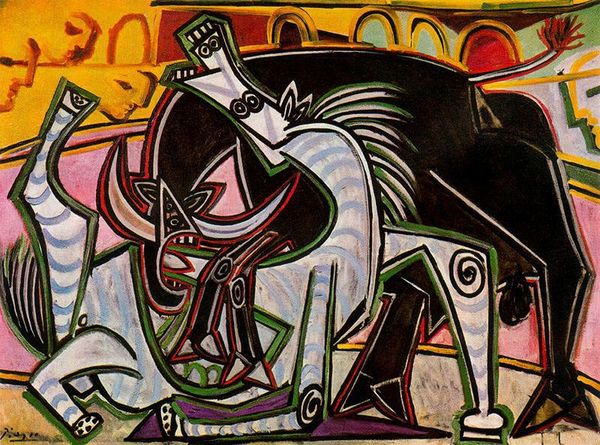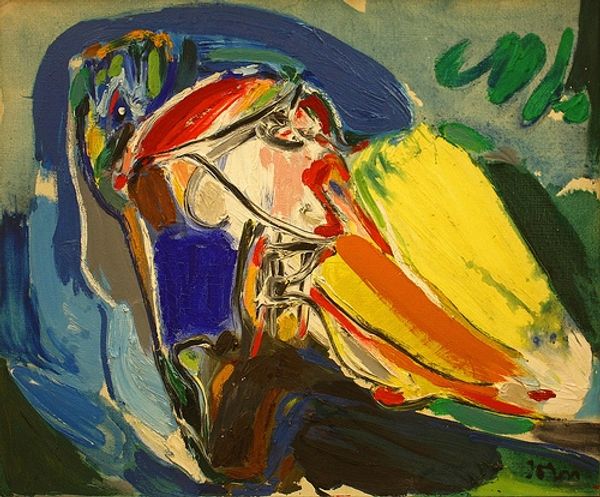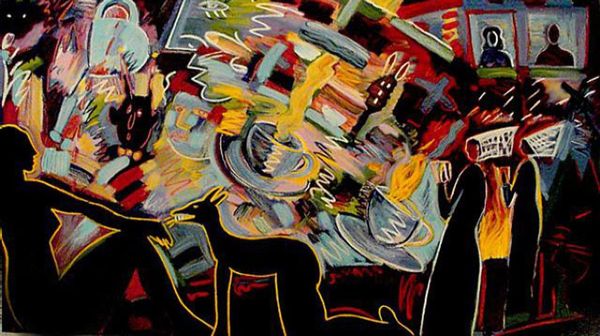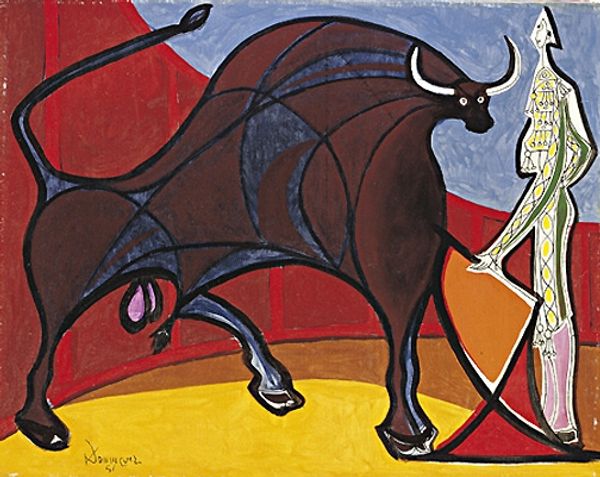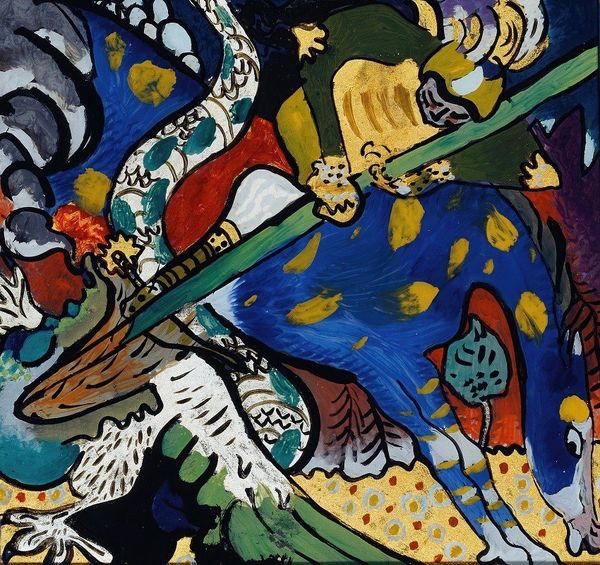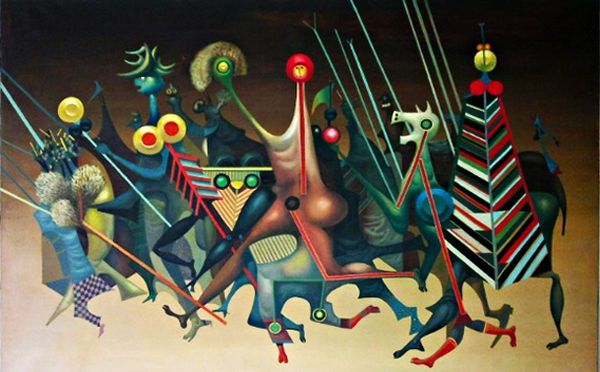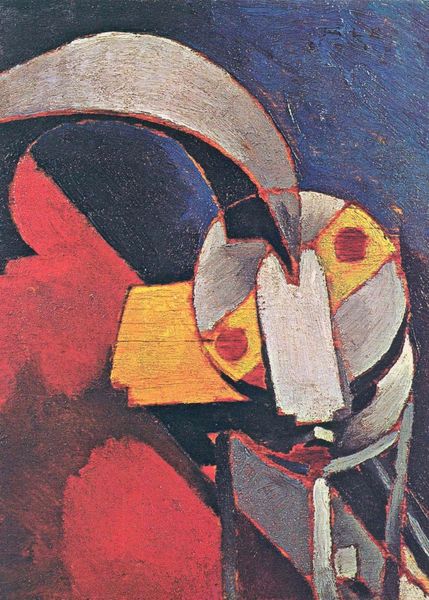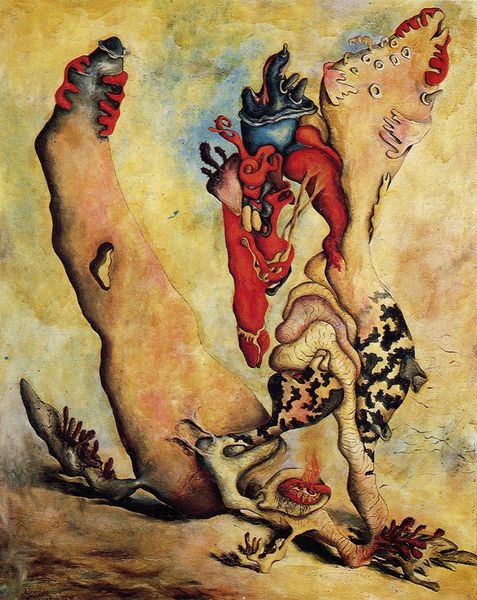
After Muybridge - Study of the Human Figure in Motion - Woman Emptying a Bowl of Water and Paralytic Child on all Fours 1965
0:00
0:00
Dimensions: 198 x 147 cm
Copyright: Francis Bacon,Fair Use
Francis Bacon made this large oil painting, "After Muybridge - Study of the Human Figure in Motion," using brushes and rags to drag the pigment across the canvas. Bacon took inspiration from the Victorian photographer Eadweard Muybridge, known for his motion studies. Bacon twisted Muybridge's scientific observation into something altogether more visceral, even grotesque. Look closely, and you can see the way he built up the image, scrubbing away as much as he added. The figures almost seem to be emerging from, or dissolving back into, the ground of the painting. This reflects Bacon's wider focus on capturing the fleeting, unstable nature of human existence. The painting's power comes from the way Bacon manipulates his materials. The textures he coaxes from the paint—the thick impasto, the thin washes, the sharp lines—are as important as the subject matter itself. Bacon reminds us that all representation is a form of making, and that the artist's touch is what ultimately brings an image to life.
Comments
No comments
Be the first to comment and join the conversation on the ultimate creative platform.
